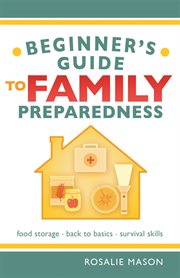Details
PUBLISHED
Made available through hoopla
DESCRIPTION
1 online resource
ISBN/ISSN
LANGUAGE
NOTES
This indispensable guide to family emergency storage provides a wealth of information for anyone who is serious about being prepared. In the eight sections of this book you will find: * Basic food suggestions for home food storage * Food storage facts and tips * Directions on dehydrating, fermenting, smoking, and curing meat * Nonfood necessities, such as medical supplies, clothing, and baby needs * Ovenless baking, soap making, candle molding, tanning hides, using white gas and kerosene, and tips for a survival garden * Survival mechanics * Recipes for tasty survival foods, including main dishes, breads, and desserts * Techniques for sprouting grain, washing on a rub-board, building animals traps, and other handy information No other literature on the market offers a more in-depth guide to family emergency preparedness. Beginner s Guide to Family Preparedness is a valuable addition to any home or community library! This useful book contains a wealth of valuable information that can help any family be prepared for emergencies that may arise. It is written in simple language so that beginners can use it, but the information far exceeds that found in most other books. The beginner's guide is conveniently organized in eight sections. Part 1 discusses the why, what, how and where of food storage and recommends basic foods for a home storage program. Part 2 presents food-storage facts and covers fumigation, the storage environment, containers, shelving plans, and rotation. Dehydration, fermenting, smoking and curing meat are the themes of Part 3. Non-food necessities such as medical supplies, clothing, and baby needs are treated in Part 4. Survival mechanics, Part 5, includes ovenless baking, soap making, candle molding, tanning hides, using white gas and kerosene, and tips for a survival garden. Part 6 is a recipe section for survival foods, presenting simple, tasty recipes for many dishes including cookies and crackers, breads and cereals, main dishes, and desserts. Part 7 presents tips on techniques for sprouting grain, washing on a rub-board, building animal traps, storage utensils, other handy hints. The final chapter, Part 8, presents information for a comprehensive survival library
Mode of access: World Wide Web







